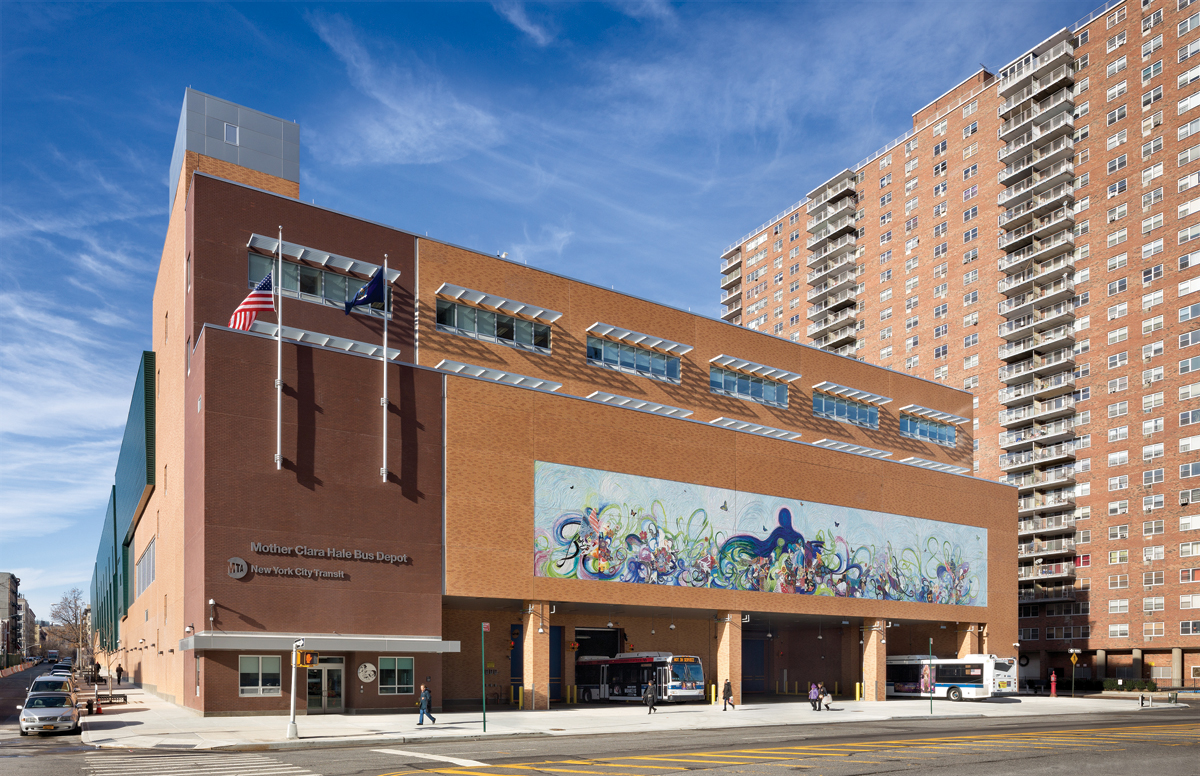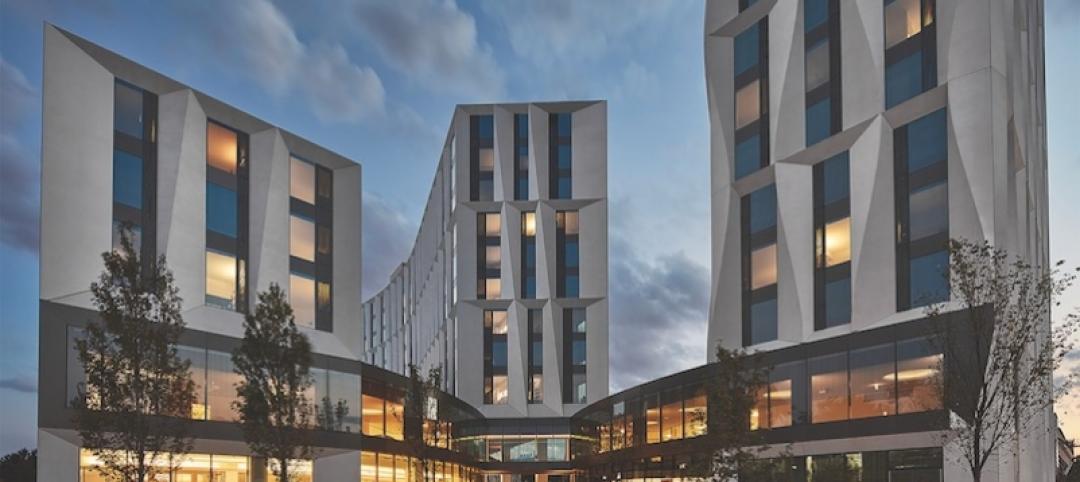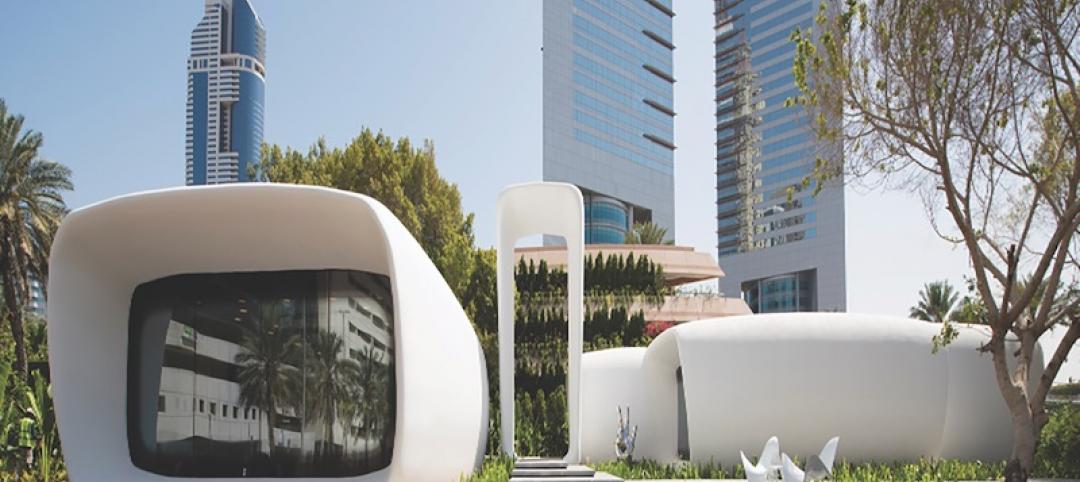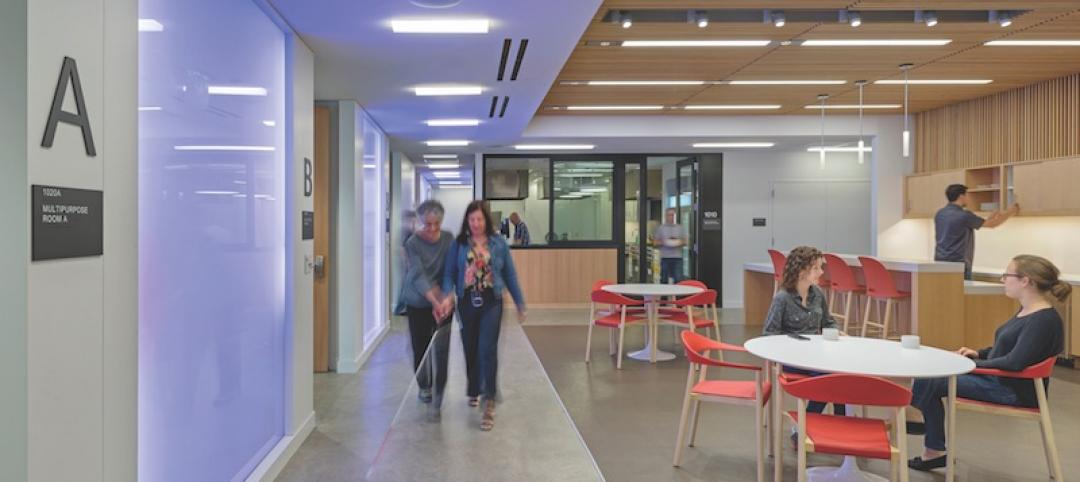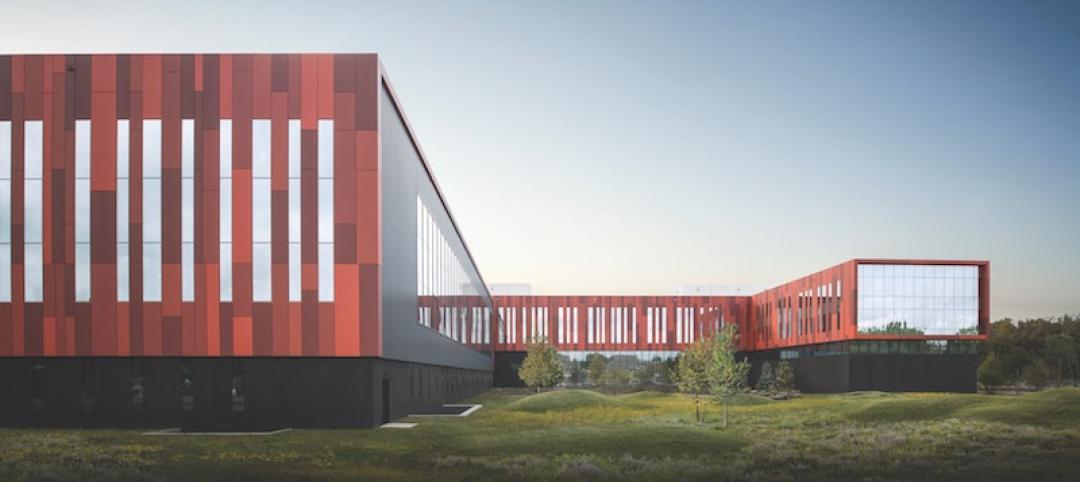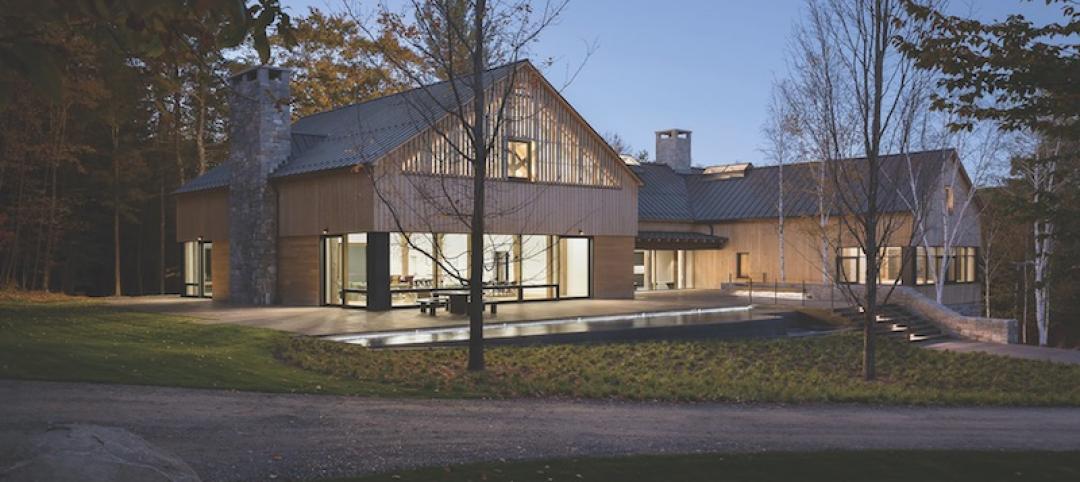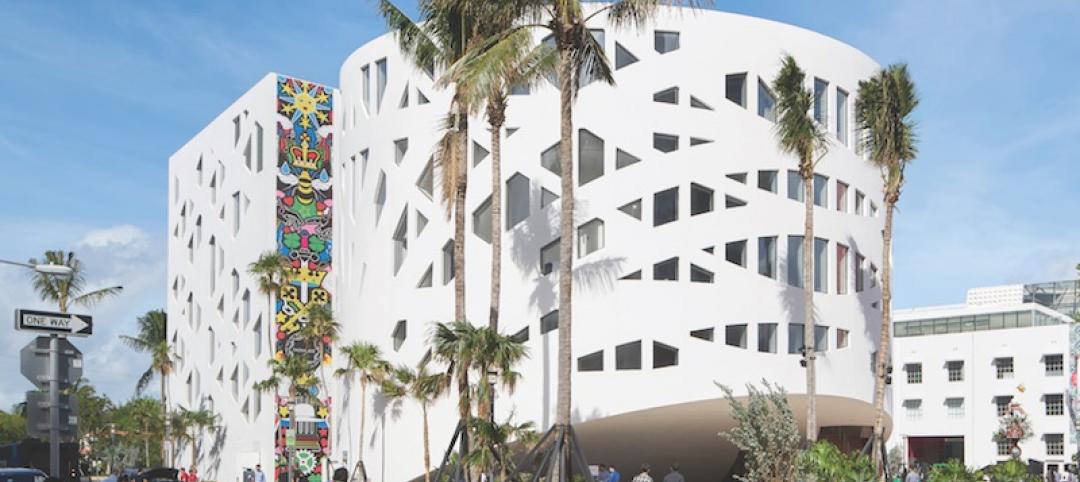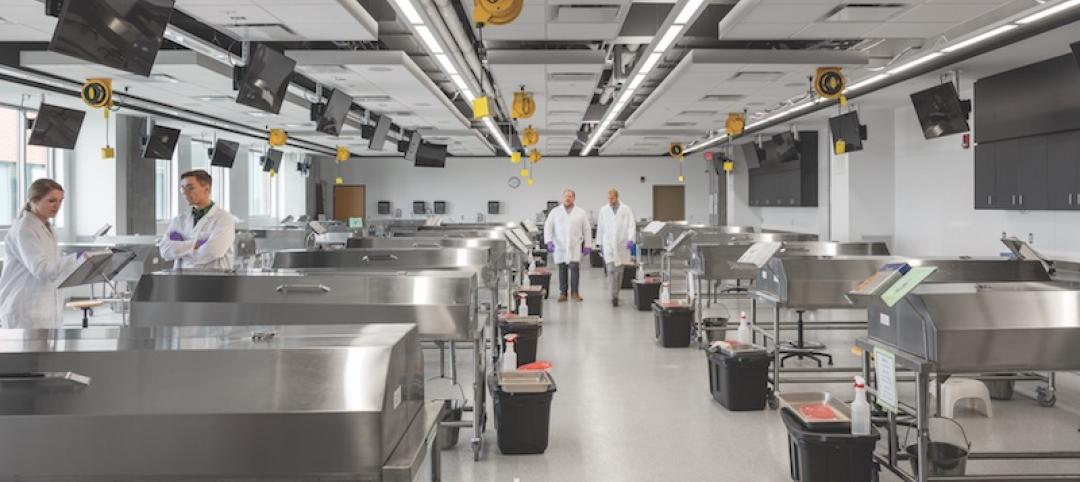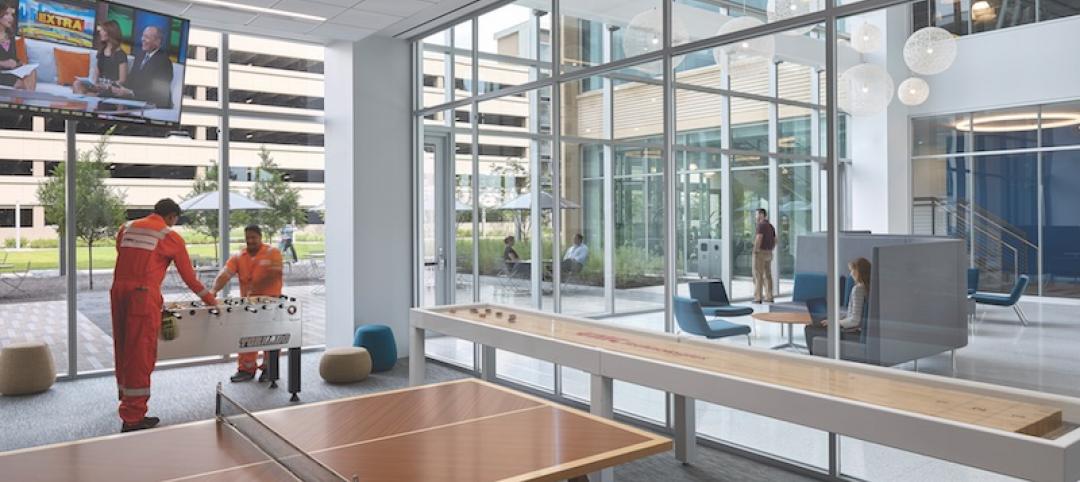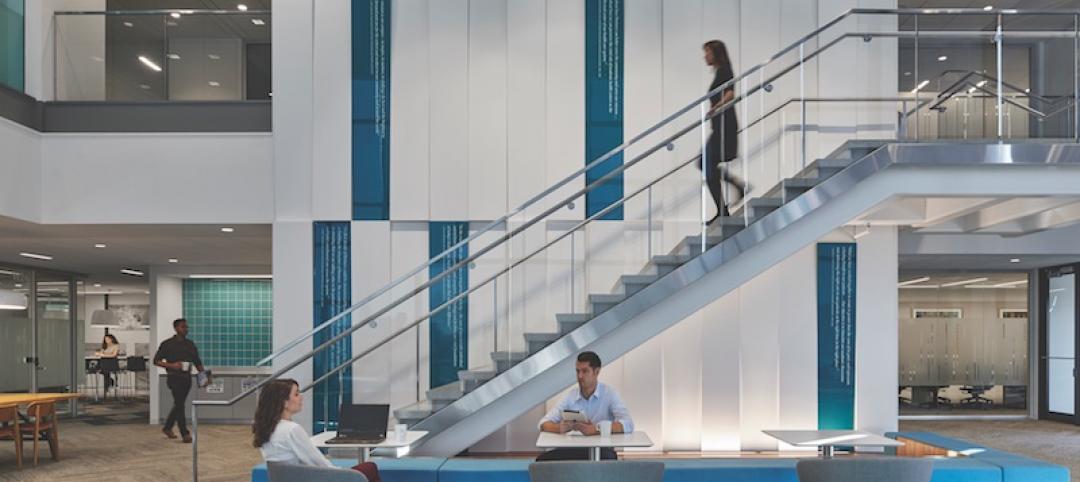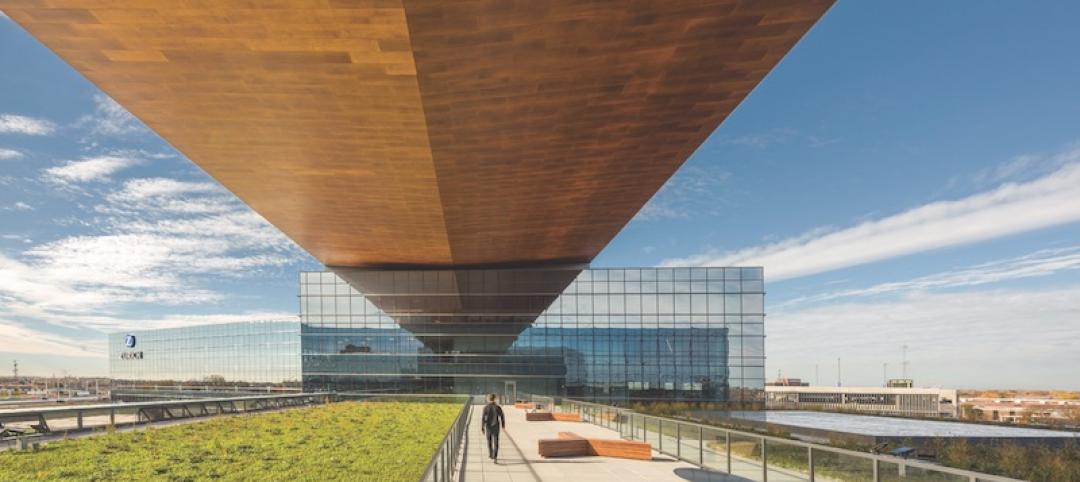Mother Clara Hale (1905–1992) was an American humanitarian who founded Hale House for unwanted children born with drug addictions. One year after her death, a bus depot on 146th Street in New York’s Harlem neighborhood was named after her. That building—erected in 1890 as a trolley barn, and razed and rebuilt as a bus depot in 2009—is now projected to be the first major LEED-certified bus depot in the country.
The owner, MTA New York City Transit, involved more than 150 community leaders in its first-ever community design charrette. Out of those meetings emerged a design that focuses on safe, efficient operations, with an emphasis on getting buses off the street as quickly as possible. To achieve that goal, the Building Team had to consider accessibility, clearance, service utilities, and lighting for each area and function.
This was not an easy building to work with. Given the magnitude of the facility, the structure was designed as three separate buildings connected via expansion joints to accommodate thermal movement. Soil conditions were poor. Lateral seismic loads were much greater than from wind. The dynamically shaped façade uses a potpourri of materials and systems—concrete masonry, precast concrete, curtain wall, storefront, art glass, and metal panels.
PROJECT SUMMARY
SILVER AWARD
Mother Clara Hale Bus Depot
New York, N.Y.BUILDING TEAM
Submitting firm: STV (architect, structural/MEP engineer)
Owner/developer: MTA New York City Transit
General contractor: Silverite
Construction manager: CB&IGENERAL INFORMATION
Project size: 390,000 sf
Construction cost: $225 million
Construction start to occupancy: November 2010 to December 2014
Construction method: Design-build
Architecture/engineering firm STV had to develop a complex system of steel member cantilevers from the floor edge to provide support at each transition and interface. The Building Team also relied heavily on BIM to integrate the design, help contractors link components with activities, and cut production time.
The depot features 12 service stations and two articulated workstations with six portable lifts. Half of the roof is cooled with CO2-absorbing plants; the other half has a reflective white surface. The facility’s 50,000-gallon rainwater collection system should reduce water use by one million gallons a year. A passive heating panel on the south façade allows air to be pulled in and preheated in the space between the façade and exterior masonry.
“The city of New York created an artistic centerpiece for the Harlem neighborhood,” says Terry Fielden, LEED AP BD+C, Director of K-12 Education at ICI, and a Building Team Awards judge. “The combined use of exterior artwork with the desire to conserve water resources sends a message of commitment to sustainability. The effort is a reminder that even a basic and functional facility can be a focal point of character in an urban environment.”
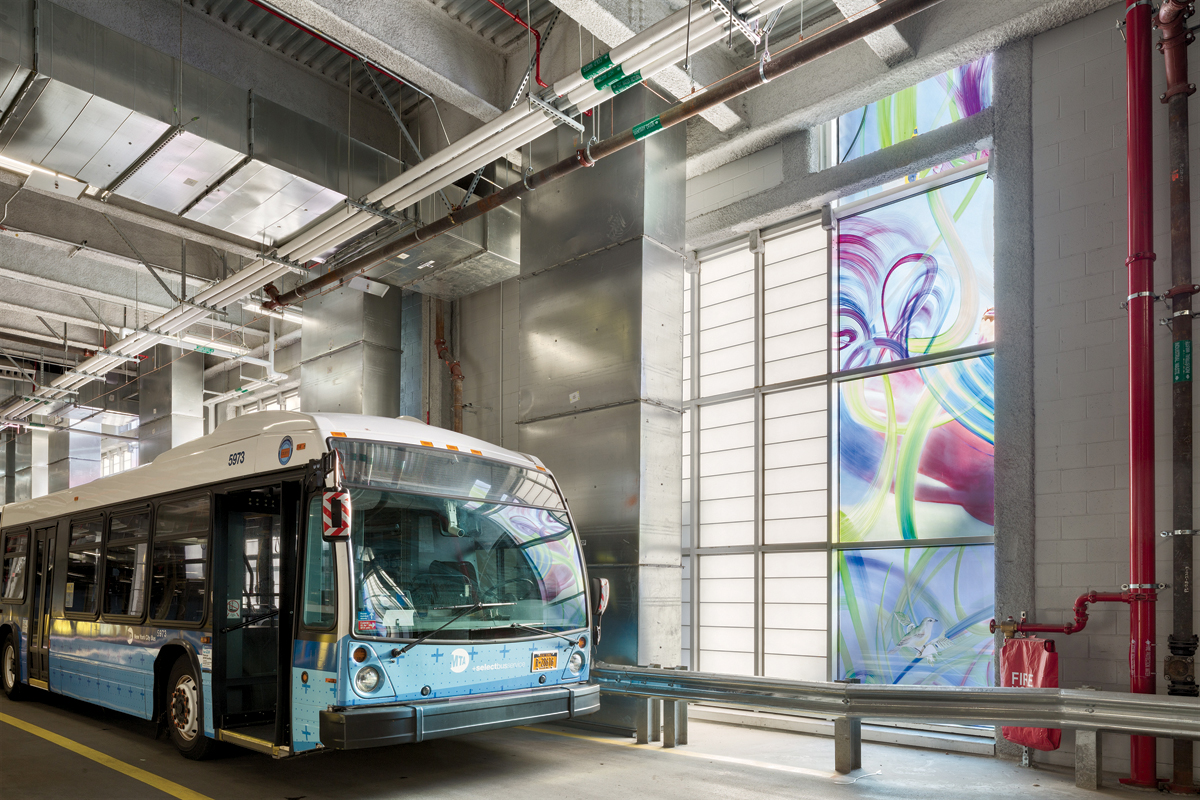 The Mother Clara Hale Bus Depot in Harlem is the first LEED-certified bus stop in the U.S.
The Mother Clara Hale Bus Depot in Harlem is the first LEED-certified bus stop in the U.S.
Related Stories
Building Team Awards | Jun 14, 2017
17 projects earn BD+C's 2017 Building Team Awards
Of the 17 projects, one received a Platinum Award, six received Gold Awards, six received Silver Awards, two received Bronze Awards, and two received Honorable Mentions.
Building Team Awards | Jun 14, 2017
3D-printed office: Office of the Future
Dubai kicks off 3D-printing tech initiative with a novel office project.
Building Team Awards | Jun 14, 2017
A space for all: Lighthouse for the Blind and Visually Impaired
Nonprofit HQ fitout improves functionality, accessibility for blind and low-vision individuals.
Building Team Awards | Jun 13, 2017
Government campus reimagined: Intelligence Community Campus
Building Team converts 1940s campus into a sleek, modern home for U.S. intelligence agencies.
Building Team Awards | Jun 13, 2017
Secluded sanctuary: Alnoba leadership training center
Leadership training center becomes New England’s first Passive House building.
Building Team Awards | Jun 12, 2017
Circles and squares: Faena Arts Center
Silver Award: The Faena Arts Center’s forum is divided into two volumes, one a cylinder, the other a cube.
Building Team Awards | Jun 12, 2017
The right prescription: University of North Dakota School of Medicine & Health Sciences
Silver Award: North Dakota builds a new medical/health sciences school to train and retain more physicians.
Building Team Awards | Jun 12, 2017
Texas technopark: TechnipFMC John T. Gremp Campus
Silver Award: TechnipFMC’s new campus marks the start of a massive planned community in north Houston.
Building Team Awards | Jun 8, 2017
Quick turnaround: Partners HealthCare
Silver Award: A 2½-year project brings Partners HealthCare’s sprawling administrative functions under one roof.
Building Team Awards | Jun 8, 2017
Raising the bar: Zurich North American Headquarters
Silver Award: Forgoing a typical center-core design, the Zurich North America Headquarters rises 11 stories across three stacked bars.


